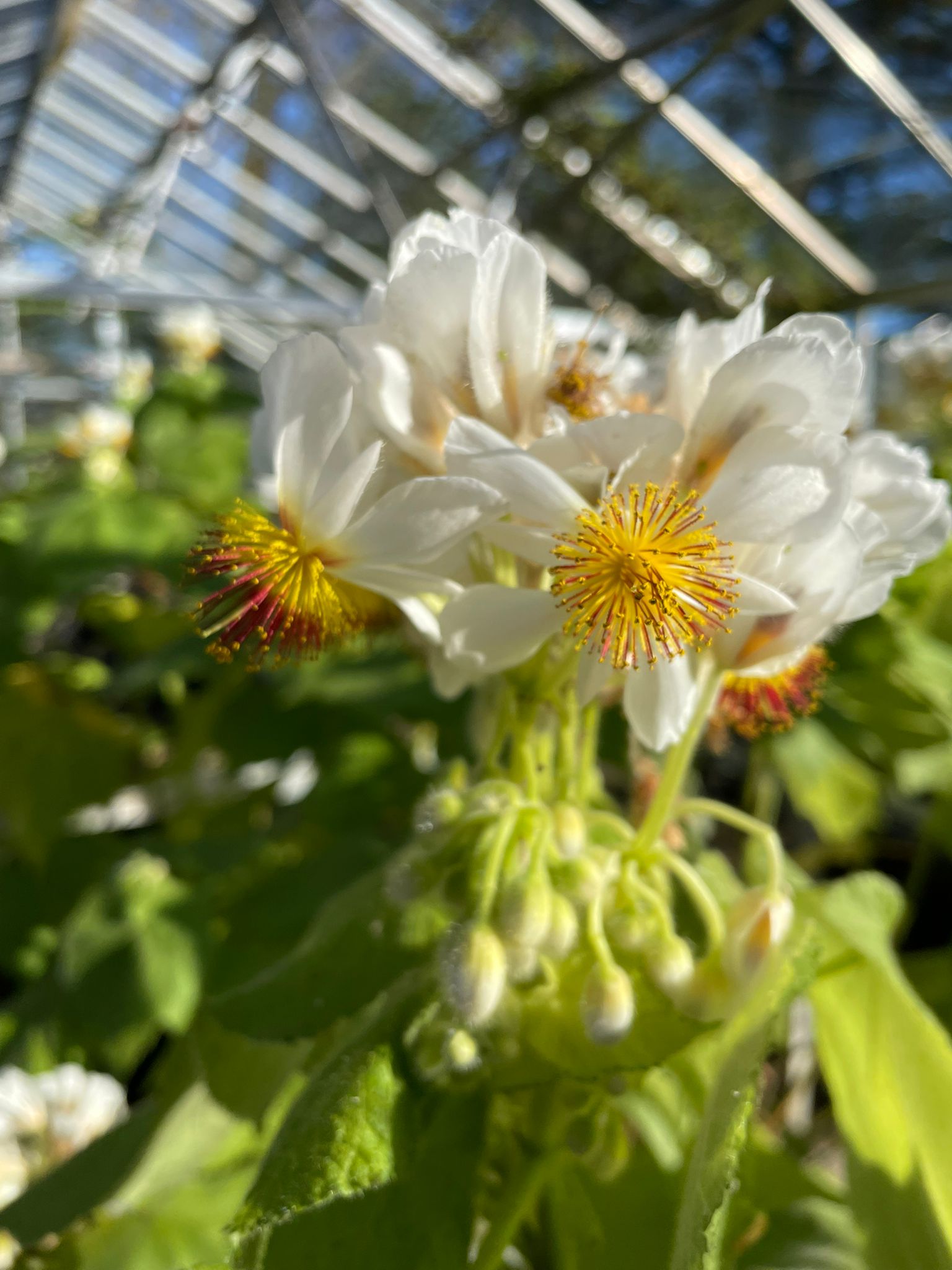With bright days few and far between in January, they become particularly precious when they do occur. It’s been quite warm, if not wet and very windy, but we’ve still been able to ‘get on’. We have finally reached the end point of the wall-trained plants, with a few exceptions, and the focus is now on the Rose Garden. Pruning, training, cutting back, editing, thinning, and eventually mulching will be the tasks ahead.

The Garden Focus for February

On the topic of mulching… In recent years, we have been using mushroom compost to mulch our borders, as we currently cannot produce enough of our own compost required annually for this job. However, it is somewhat of a moral dilemma for us. Many examples of mushroom compost contain peat, something we have strived – successfully – to remove from our growing media and sourcing of plants. Reintroducing it into the garden, albeit as a byproduct of mushroom growing, feels a bit self-defeating: it offers the planet much more in its natural state than it does our borders, being far more beneficial when in the ground than as a dressing for our soil.

The dilemma we face is whether, if we were all to stop using mushroom compost, the growers would stop using it. If not, then should we make the most of a product already in use, attempting to offset the damage already caused? Seeing it ‘go to waste’ surely compounds the issue. The reasons this is also a dilemma is that the price of alternatives is significantly more expensive. The decision we’ve come to at Helmingham, however, is to use organic matter sourced from green waste and composted wood fibre going forward.
Apple pruning is the other pressing task for the month, alongside mulching. We have many venerable trees to prune, and the urgency is more related to the imminent emergence of the bulbs lining the Apple Walk than the arrival of Spring. We aim to complete the task by the end of February, and, all being well, we should achieve this. The process involves using long-reach telescopic pruners, long-handled snips, saws, secateurs, loppers, chainsaws, ladders, Henchman platforms, and other tools. It’s quite an involved job and very repetitive, often carried out in bone-chilling northerly winds and low temperatures while atop ladders and platforms. Next time you walk down that side of the garden, just remember those trees have had weeks of work spent on them each year, sculpted by weather-worn gardeners who have carefully tended every square inch with their eyes and secateurs.

We have quite a few floral delights at the moment – outdoors we have winter flowering shrubs, particularly fragrant are the Sarcococca hookeriana, Daphne bholua and Viburnum x bodnantense, snowdrops, winter aconites and Iris unguicularis. Indoors we have Sparrmannia africana, Polygala dalmaisiana, Acacia longiflora and Pandorea pandorana with Veltheimia capensis budding.

